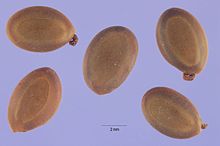Acacia confusa: Difference between revisions
common noun per WP:MOS |
Rescuing 1 sources and tagging 0 as dead. #IABot (v1.2.4) |
||
| Line 60: | Line 60: | ||
*[http://wiki.dmt-nexus.me/Acacia_confusa Acacia confusa on DMT-Nexus Wiki] |
*[http://wiki.dmt-nexus.me/Acacia_confusa Acacia confusa on DMT-Nexus Wiki] |
||
*[http://www.erowid.org/plants/acacia/acacia.shtml Erowid Acacia vault] |
*[http://www.erowid.org/plants/acacia/acacia.shtml Erowid Acacia vault] |
||
*[http://libproject.hkbu.edu.hk/was40/detail?lang=en&channelid=1288&searchword=herb_id=D00350 Acacia confusa Merr.] Medicinal Plant Images Database (School of Chinese Medicine, Hong Kong Baptist University) {{zh-hant}} {{en icon}} |
*[https://web.archive.org/web/20150410122708/http://libproject.hkbu.edu.hk/was40/detail?lang=en&channelid=1288&searchword=herb_id=D00350 Acacia confusa Merr.] Medicinal Plant Images Database (School of Chinese Medicine, Hong Kong Baptist University) {{zh-hant}} {{en icon}} |
||
{{Commonscat|Acacia confusa}} |
{{Commonscat|Acacia confusa}} |
||
Revision as of 03:24, 3 October 2016
| Acacia confusa | |
|---|---|

| |
| Scientific classification | |
| Kingdom: | |
| (unranked): | |
| (unranked): | |
| (unranked): | |
| Order: | |
| Family: | |
| Genus: | |
| Species: | A. confusa
|
| Binomial name | |
| Acacia confusa | |

| |
| Range of Acacia confusa | |
| Synonyms | |
Acacia confusa is a perennial tree native to South-East Asia. Some common names for it are acacia petit feuille, small Philippine acacia, Formosa acacia (Taiwan acacia) and Formosan koa. It grows to a height of 15m. The tree has become very common in many tropical Pacific areas, including Hawaii, where the species is considered invasive.[3]
Uses
Its uses include chemical products, environmental management and food and drink. The bark may be ground into a powder and saturated into water to create a tea, or may be spread onto various foods as a spice and taste enhancer. The wood has a density of about 0.75 g/cm³.[4] In Taiwan, its wood is used to make support beams for underground mines. The wood is also converted to charcoal for family use. The plant is used in traditional medicine[5] and is available from herbal medicine shops (草藥店) in Taiwan, but there has been no clinical study to support its effectiveness. It is also frequently used as a durable flooring material.



Phytochemicals
Phytochemicals found in Acacia confusa:
Root bark
- N-methyltryptamine, 1.43%[6]
- N,N-dimethyltryptamine, 1.15%[6]
Seeds
- Neurolathryogen (α-amino-β-oxalylaminopropionic acid), which can cause neurological damage, paralysis and death.[6]
Stems
Phyllodes
No alkaloids are found in the phyllodes (leaf-like structures).[6][dubious – discuss]
Varieties
See also
References
- ^ Template:IUCN2013.2
- ^ International Legume Database & Information Service (ILDIS)
- ^ Pacific Island Ecosystems at Risk (PIER)
- ^ FAO Appendix 1
- ^ Li, Thomas S. C. Taiwanese Native Medicinal Plants: Phytopharmacology and Therapeutic Values, CRC Press (2006), ISBN 0-8493-9249-7, p.2. online GoogleBooks preview
- ^ a b c d e f Lycaeum
External links
- Acacia Confusa Global Distributor based in the U.S.
- Acacia confusa on DMT-Nexus Wiki
- Erowid Acacia vault
- Acacia confusa Merr. Medicinal Plant Images Database (School of Chinese Medicine, Hong Kong Baptist University) Template:Zh-hant Template:En icon

